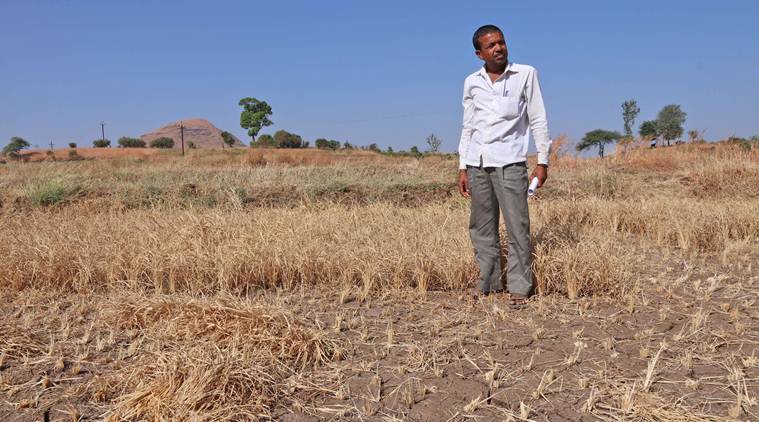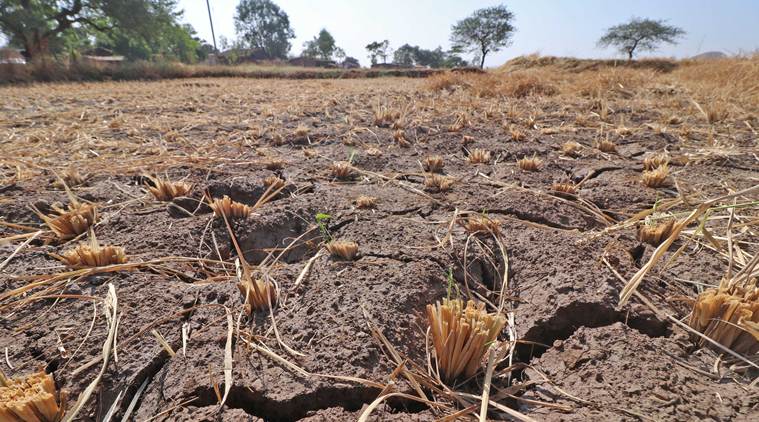
East and west, Maharashtra areas battle water wars

In Solapur’s Sangola taluka, inhabitants of 14 towns are threatening a quick unto passing if water isn’t discharged for them from the Tembhu lift water system venture on the Krishna waterway. Villagers trust the water is legally theirs yet isn’t discharged from the upstream locales of Sangli and Satara inferable from political pressure.
Almost 400 km away, on the opposite side of Maharashtra, Uttam Laxman Choudhari, 36, of Nalegaon in Nashik’s Dindori taluka focus at the notice of his about 8 acres of black gram, finger millet, groundnut, and paddy. From 10-12 quintals per acre of paddy, his yield this year is decreased to 15 kg from 5 sections of land, and he finding guilty on “Politically Motivated” arrival of water of the east-flowing river from the western talukas of Nashik. The water was gone before the harvest picked up quality, he anger.
Further north, in Juni Bej town of Kalwan taluka in Nashik, inhabitants joined a rally called by the All India Kisan Sabha a week ago with their particular interest that water from the Chankapur dam over the Girna river not be discharged towards Malegaon and Chandwad, eastern talukas of Nashik, and further on towards the parched focal Maharashtra area of Marathwada.
All over Maharashtra, as farmers mull another season of severe losses, disputes over scarce water assets have begun to percolate right down to the village and taluka tiers. Prior this month, the Nashik region organization discharged water for Jayakwadi, Marathwada’s biggest dam, after the Preeminent Court had rejected an appeal to against the discharge to water-rare lower riparian zones. on the other hand, the discharge of water had to be performed beneath the protective gaze of rebellion manage police groups.

‘In Juni bej village, the name reportedly a bastardization of a colonial officer’s remark that the village’s jaggery production became “first-rate”, sarpanch ahilyabai yendaith says 60 percent or more of corn fields have dried up this yr because of moisture strain. “3 Quarters of the village is inside the canal-irrigated place, and with the canals strolling dry as water is already diverted eastward, there may be crop loss,” she says. Some other villager, Ramesh Bacchae, complains that juni bej no longer has “Jai swaraj”, or self-rule, in water, notwithstanding the dam constructed for their farmland
In instances of acute water distress inclusive of this, the concept that ownership of the dammed water must stay with locals by myself is a popular one in drought-hit areas. “The release of the saved water, that is legally ours, to us is the best manner for us to live on this year. once our orchards go dry, it’s going to take minimal 5 years to get them again on track,” says Ramesh Jadhav, one of the Sangola villagers. placed at the tail stop of Solapur district, Sangola is drought-prone. this 12 months, in opposition to its annual common rainfall of 462.4 mm, Sangola has acquired around 159 mm, an over 70 percent deficit that has put at chance its pomegranate crop, regarded for the notable micro-irrigation techniques the farmers here use. Sangola’s groundwater table to has slipped, with borewells strolling dry.
Arvind kedar of vasud village says they may be entitled to five.five TMC of water from the Tembhu elevate irrigation scheme, 2 TMC of water from the Mhaisal carry irrigation challenge and another 2 TMC from the Nira proper financial institution canal assignment. This water, the protesters say, should be launched into the Maan river to be diverted to various villages.
Ganpatrao Deshmukh, the nonagenarian Peasants and Workers Party (PWP) MLA of Sangola, calls the demand logical and just. “I have written to the lead minister for the launch of water,” he advised the Indian express.
At least a number of the orders to unleash water square measure controversial by district officers themselves — high officers in Nashik, for instance, say they weren’t consulted before the Godavari Marathwada Irrigation Development Corporation issued its oppose order for the discharge of waters. “There’s a general belief that there’s lots of water here within the higher bank components of the Godavari basin, however, our drinkable wants have full-grown staggeringly. The speedy urbanization within the district have to be compelled to be taken into consideration,” says a senior officer. “There square measure twenty-three dams within the Godavari and Tapi basin, however even place along their capability is a smaller amount than fifty percent of the capability of Jayakwadi,” the officer adds.
Ramesh Choudhari of Nalegaon points to the discharge of water from Palkhed dam on Kadwa watercourse, on those giant tracts of Nashik’s vineyards area unit dependent. In Juni Bej, a bitter Vinod Khairnar talks regarding the onion crop he saved in storage ‘chawls’, a structure that a government theme provides aid for. Storing the turnout and emotional it to the markets step by step would facilitate fetch higher costs, Khairnar was told, like tens of thousands of farmers WHO have equally engineered storage structures. “But the turn out is decomposition currently, and with no rabi sowing as a result of there’s no water for the U.S. in our dams, I’m merchandising the onions at no matter worth I buy,” says the 33-year-old.
With ten acres of land, Khairnar is seen as an enormous farmer, however, diurnal drought and poor market realizations have light-emitting diode him to chop corners. His folks, in their 60s, mapped out the onion within the chawl before it’s taken to the market. He transports the turn out himself, to save lots of the value of rentals. He’s even skipped fixing a brand new starter during a broken electrical box outside his field. “The government thinks nothing of importation onions once costs rise, with great care farmers like American state will keep impoverished forever,” he says.
That there’ll be near-zero rabi sowing this year could be a common assessment among farmers, all fast to feature that had the discharge of dam waters been stalled a couple of months, a second crop could are attainable.
But those within the eastward districts area unit sad too. Prakash Somvanshi, former deputy president of the Jalgaon Zilla Parishad, scoffs at the concept that Nashik’s waters enrich Jalgaon’s cotton growers and banana plantation homeowners. whereas farmers in western Nashik say pointedly that Jalgaon is that the home district of Maharashtra Water Resources Minister Girish Mahajan, Somvanshi, a knife Sena leader, points out, “There is the tremendous destruction of the cotton crop this year in Chalisgaon and Pachora (in Jalgaon), perhaps fifty per cent crop loss.”
Last week, Pachora city received municipal installation when a 24-day gap. the case isn’t terribly totally different in alternative taluka cities in Jalgaon.
Veteran economic expert H M Desarda says not simply regional disputes however additionally disputes over the sort of use of water area unit rising. “Even if it’s a tiny low amount, farmers area unit currently upset at the utilization of dam water for the liquor business. And farmers everyplace area unit justifiedly angry at the rise of sugarcane cultivation — this has been a plunder of groundwater levels,” says the previous member of the state’s committee, WHO could be a party during a PIL seeking higher readiness in confronting of drought in Maharashtra. Widespread dredging {and the|and therefore the|and additionally the} operation of sand mafias have also left rivers while not sand, he says. “They’re simply nullahs.”
Warning that these water disputes could sharpen as rivers themselves respond erratically to fret, Desarda adds, “While we tend to might not see riots or war, actually these disputes can result in social strife, deeper imperfection between teams, and every one as a result of policy-makers area unit unable to trust the equitable distribution of water.”